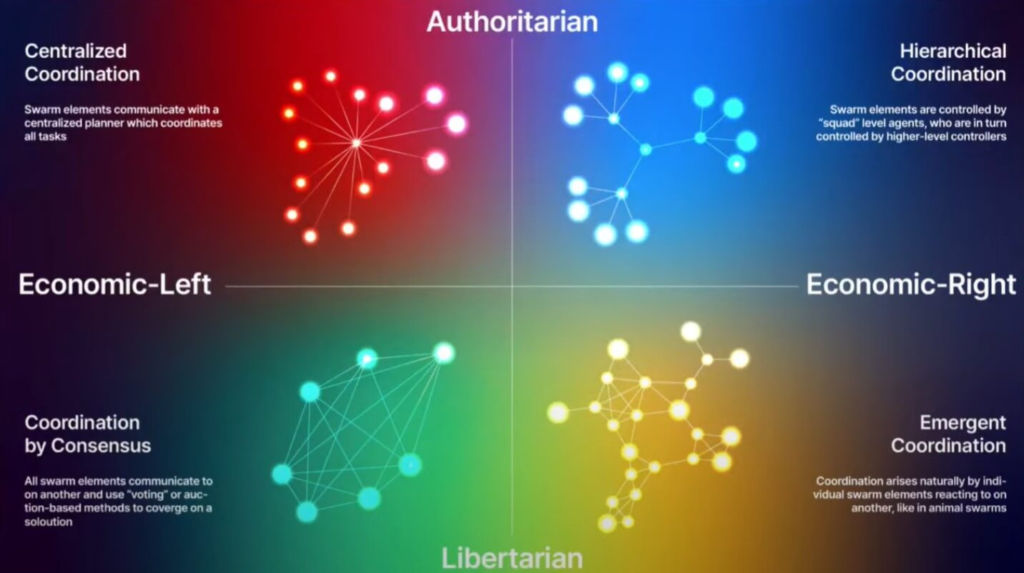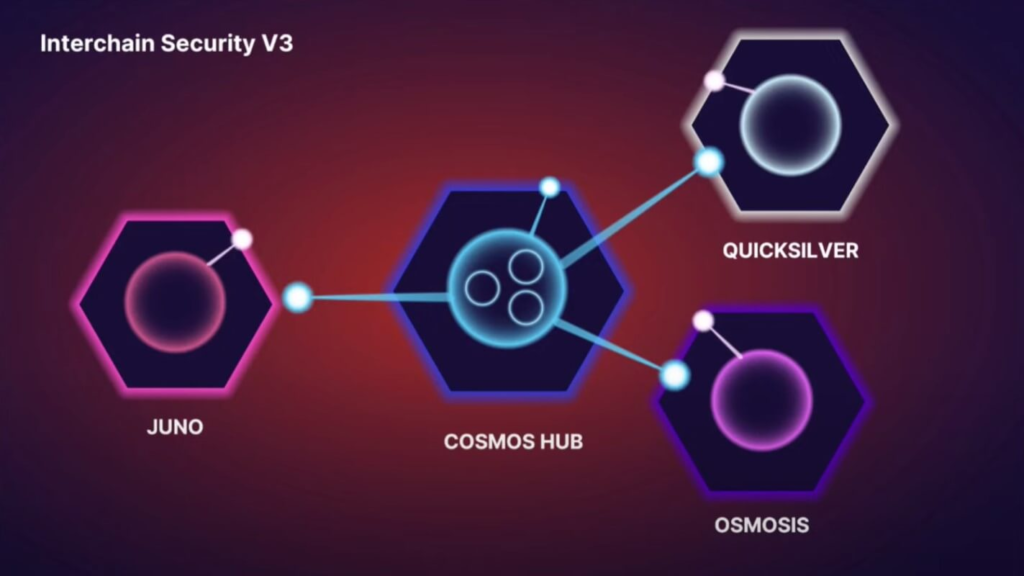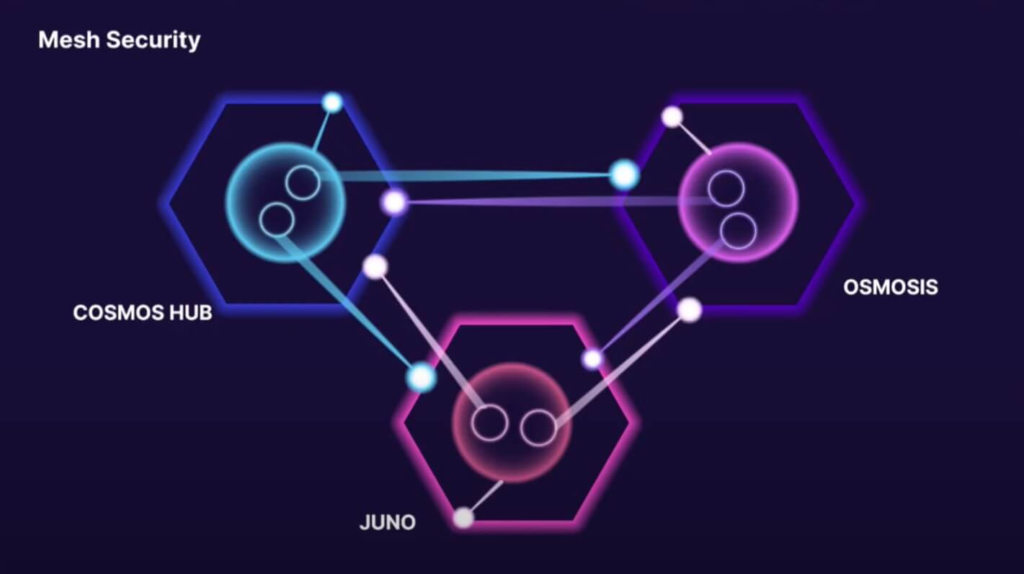- Cosmoverse begins in Medellin
- Mesh security can improve network coordination
- Cross-chain staking is capable of enhancing blockchain security
Sunny Aggarwal, co-founder of Osmosis Labs spoke on the first day of Cosmoverse. The event is being held in Medellin, Colombia.
Aggarwal was among the first speakers at the event. Wearing a 40 lb chainmail which he “lugged across two continents… for a one-line joke.”
Perceiving Network coordination using the political compass
He began with a picture of the political compass, one that describes the types of network coordination variations. The horizontal axis is marked with Economic-left and Economic-right on either side while the vertical axis is marked with Authoritarian and Libertarian on either side.

Aggarwal mentioned that the image “really spoke to me”. Calling it “kind of a meme… but it’s a good model to define network structures”, he highlighted the network structures of traditional web 2.0 internet which are characterized by the authoritarian form of network.
He stated that authoritarian networks had ‘centralized points of failure’ and that ‘mesh systems’ need to be built. With these fundamental flaws, the remaining two are the ‘coordination by consensus’ or the ‘emergent coordination’ networks
Aggarwal explained that consensus protocols underpinned ‘coordination by consensus’ via examples from the Tendermint consensus system and traditional democracies. However, he noted that there was a problem with these protocols:
“The problem is that these green systems don’t scale very well as they require n-squared communication.”
He claimed the issue with the scalability of consensus protocols was known during the time Cosmos was being developed. It was the reason why Inter-Blockchain Communication (IBC) was created.
Referring to the image, Aggarwal argued that such ‘green-sub systems’ could morph into authoritarian networks if particular networks were located in a central position in the overall network. He said Polkadot parachins and Ethereum’s ‘rollups’ were good examples of such a case.
The scalability issue called for meshing systems; however, “voting does not work at an inter-chain level.” He added that the ‘yellow system’ in the image was the suitable option in this case.
Aggarwal mentioned that Cosmos had developed a mesh system similar to the ‘yellow system’. He drew an analogy with North Atlantic Treaty Organization (NATO) to further explain the benefits of a meshed system. According to NATO’s Article 5, all member countries must defend a member(s) if it is attacked.
Inter-chain security versions
Aggarwal discussed the 3 versions of inter-chain security:
Version 1, in which a validator set fully validates a separate sovereign blockchain was not practical since it was the equivalent of increasing the size of the block.
Version 2, wherein a subset of validators fully validate a sovereign blockchain is also known as ‘sharding’ in other ecosystems. This version does not need consensus for adding new blocks and is more scalable. Aggarwal discounted this version because it was not yet a fully sovereign mesh system.
Version 3, which is used by Cosmos involves a subset of cosmos validators validating osmosis. This is not perfect since the cosmos validator set acts as a ‘central point of failure.’ Aggarwal explained that the solution to the centralization problem in version 3 is to allow Osmosis and other associated chains to validate Cosmos. The two pictures illustrate the problem in version 3 and the solution he proposed:


Looking ahead: cross chain staking and mesh security
Towards the end, Aggarwal mentioned key statistics buttressing the point of mesh security:
75% of Osmosis validators run Juno validators and 72% of Juno validators run Osmosis validators. He claimed that this does not increase decentralization, but a ‘soft shared security’ which would allow validators to check on each other, thus facilitating governance.
Cross staking would boost rewards in the Cosmos ecosystem via IBC to “submit transactions and correlate their identity across both chains.” Centralization could be avoided if delegators chose validators with the highest rewards; while delegators could stake in other chains via separate validators. He added.
Aggarwal mentioned that the voting power of chains would be limited because of smaller chains; thus protecting against 67% attacks. He added that cross staking could prove highly beneficial to chains that are dependent on each other economically. Osmosis and Axelar and Osmosis and Mars, share millions of dollars in economic enterprise. Cross staking would enable chains to protect each other.

With a background in journalism, Ritika Sharma has worked with many reputed media firms focusing on general news such as politics and crime. She joined The Coin Republic as a reporter for crypto, and found a great passion for cryptocurrency, Web3, NFTs and other digital assets. She spends a lot of time researching and delving deeper into these concepts around the clock, and is a strong advocate for women in STEM.


 Home
Home News
News










